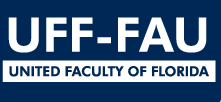From Remaking the University (blog)
By Christopher Newfield and Michael Meranze
Since the election there has been much discussion of higher education’s self-inflicted wounds. Mark Lilla and Nicholas Kristof, have trotted out the usual cherry-picked examples of alleged intolerance on (mostly elite) campuses as signs that universities exist at a distance from the real world. Both have ignored the realities of life for most students and faculty, a point that shouldn’t surprise us I suppose. After all they are both locked into the New York media bubble whose gaze seems to extend all the way from Cambridge to Washington D.C. These screeds would simply be unhelpful and annoying if they didn’t serve to distract attention from more fundamental problems facing higher education today. For it is time for faculty and others committed to the future of universities and colleges to think more clearly about what needs to be changed in our own self-organization as we move forward.
One of the most glaring, if also most often ignored in public debate, is the working conditions of precarious faculty and its relationship to questions of academic freedom. It is no secret that the large majority of teaching in colleges and universities is done by contingent labor (either graduate students or non-tenure track faculty). Yet as both Bob Samuels and Lee Kottner have recently pointed out, the particular threats that contingency poses to academic freedom has been largely ignored. Yet there can be little question that it is contingent faculty, not tenure track, let alone tenured, faculty who face the greatest dangers regarding their freedom to teach and to write. After all, the very point of hiring contingent faculty is to preclude obligations to ensure them long-term or full-time employment.
In his post, Bob points to something as seemingly simple as using student evaluations for assessing contingent faculty. I think that most of us believe student evaluations to be helpful in getting a sense of student responses but have limited purchase in evaluating the quality of teaching. That is why there are alternative sources of evaluations for tenure track faculty. But for contingent faculty, whose entire evaluation is based on teaching, there are rarely if ever alternatives. Contingent faculty, in other words, are at the extreme point of vulnerability in terms of offending or annoying their students. As Bob points out this situation places contingent faculty in an “impossible situation” when it comes to discussing controversial subjects.
Moreover, as Lee Kottner argues, the discussion around initiatives like Professor Watchlist has had little to say about the implications of the watchlist for adjuncts and lecturers. Yet by virtue of being contingent they have less protection than do tenure track and tenured professors. Institutions are far more easily able to remove them (unless they have union protections). It is the very nature of “Just in Time” faculty hiring that it allows institutions to act with little warning or oversight. Let’s think of it this way: can you imagine anything like the publicity or pushback that occurred over this week’s Drexel or Oregon cases taking place because a college or university decided to fire an adjunct? After all, it could be done with little publicity simply by a failure to rehire. Other faculty would hear only after the person had not been renewed–if then. At that point, administrators or departments could simply say that there was no need to renew the position. Lacking the formal protections of tenure track faculty could anyone do anything? And if they could, would they?
Indeed, one of the most important unlearned lesson of the Salaita case was that Professor Salaita was vulnerable precisely because he was between two secure positions. But precarious faculty are structurally between positions in that sense. Colleges and universities like to think of themselves as ethical communities; but that community it appears does not extend to the vast majority of employees. Much ink has been spilled about specific conflicts over academic freedom in the last few years. But so long as a majority of teaching is done by individuals whose employment can be terminated each term and who are dependent on not upsetting either students or tenure track colleagues, it is a mockery to claim that colleges and universities are places of academic freedom.
